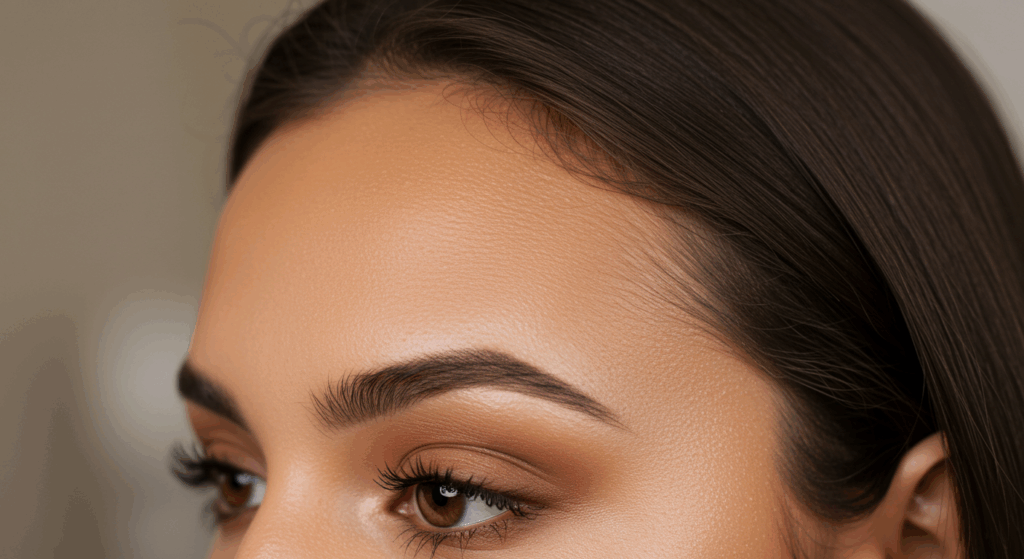For transgender women (MTF) seeking facial feminization surgery (FFS), addressing the forehead and brow bone is often a pivotal step in achieving a more feminine facial aesthetic. The masculine forehead typically exhibits a more prominent brow ridge (the bony protrusion above the eyebrows) and a sloping contour, while the feminine forehead tends to be smoother, more vertical, and often slightly convex. Foreheadplasty, a specialized set of surgical techniques, aims to reshape this area. This comprehensive guide, written from a surgeon’s perspective, delves into the various types of foreheadplasty procedures available for MTF transition, providing a detailed understanding of the techniques, anatomical considerations, and expected outcomes.

Table of Contents
Understanding the Masculine and Feminine Forehead: Bony and Soft Tissue Differences
The perceived gender of the forehead is influenced by both the underlying bony structure and the overlying soft tissues.
Bony Anatomy
- Frontal Bone: The primary bone of the forehead, extending from the hairline to the brow bones.
- Supraorbital Rim: The bony arch above each eye socket (orbit). In males, this rim is often more pronounced and angular.
- Frontal Bossing: The rounded eminences on either side of the forehead, typically less prominent in males.
- Frontal Sinus: An air-filled cavity within the frontal bone, located just above the brow ridge. Its size and projection can significantly contribute to brow bossing.
Soft Tissue
- Scalp and Hairline: The position and shape of the hairline can influence the perceived height and shape of the forehead. A higher, more rounded hairline is often considered feminine.
- Eyebrows: The shape, thickness, and position of the eyebrows also contribute to facial gender cues. Feminine eyebrows typically have a higher arch and are thinner than masculine eyebrows.
- Subcutaneous Fat: The distribution of fat beneath the skin can soften bony contours.
Hormonal Influence vs. Surgical Intervention
While hormone replacement therapy (HRT) can cause some subtle changes in facial fat distribution and skin thickness, it has minimal impact on the underlying bony structure of the forehead in adults. Therefore, surgical intervention through foreheadplasty is often necessary to achieve significant and lasting feminization of this area.

Types of Foreheadplasty Procedures for MTF Transition
Based on the individual’s anatomy and the degree of feminization desired, different foreheadplasty techniques can be employed. These are often categorized into “Types” for clarity in surgical planning and communication.
Type 1 Foreheadplasty: Brow Bone Reduction by Burring (Osteoplasty)
- Technical Explanation: Type 1 foreheadplasty, also known as brow bone reduction by osteoplasty, involves the direct abrasion (wearing down) of the anterior surface of the frontal bone, specifically the prominent brow ridge. This is achieved using surgical burs (high-speed rotating instruments).
- Colloquial Explanation: Imagine sanding down a raised bump on a piece of wood. In this case, the “bump” is the bony brow ridge, and the “sandpaper” is a special surgical tool that gently shaves down the bone.
- Ideal Candidates: This technique is suitable for individuals with mild brow bossing where the prominence is primarily due to the outer table (outer layer) of the frontal bone and the frontal sinus is not significantly projecting.
- Limitations: The amount of reduction achievable is limited by the thickness of the outer bone layer and the underlying frontal sinus. Attempting to remove too much bone can risk entering the sinus.
Type 2 Foreheadplasty: Forehead Reconstruction with Setback of the Anterior Table (Cranioplasty)
- Technical Explanation: Type 2 foreheadplasty, or setback cranioplasty, involves making a coronal incision (across the scalp, behind the hairline) to expose the frontal bone. An osteotomy (bone cut) is performed anterior to the frontal sinus. The anterior table (the outer layer of bone overlying the frontal sinus) is then carefully elevated, reshaped by thinning or contouring, and set back (moved posteriorly) to reduce the brow ridge prominence. It is then secured in its new position using titanium plates and screws.
- Colloquial Explanation: Think of the brow bone as having an outer “shell” that’s sticking out too much. In this surgery, the surgeon carefully removes this outer shell, reshapes it to be flatter, and then puts it back in a more recessed position, like pushing it inwards.
- Ideal Candidates: This technique is appropriate for individuals with more significant brow bossing caused by a prominent anterior table of the frontal sinus.
- Advantages: Allows for a greater degree of brow bone reduction compared to Type 1 while preserving the integrity of the frontal sinus.
- Considerations: Requires careful elevation and manipulation of the bone flap to avoid damage to the underlying sinus lining.
Type 3 Foreheadplasty: Forehead Reconstruction with Orbital Rim Contouring
- Technical Explanation: Type 3 foreheadplasty is the most comprehensive approach for significant forehead feminization. It involves a coronal incision and exposure of the frontal bone and the superior orbital rims (the bony edges above the eye sockets). The anterior table of the frontal bone is completely separated from the posterior table (the inner layer) and the frontal sinus. This free-floating bone segment is then extensively reshaped – often involving thinning, contouring, and sometimes even piecemeal reconstruction – to create a smooth, more vertical, and often slightly convex feminine forehead contour. Simultaneously, the supraorbital rims are contoured by burring or ostectomy (bone removal) to reduce their masculine angularity. The reshaped anterior table is then set back and secured with titanium plates and screws. The gaps created by the bone removal may be filled with bone cement or bone grafts.
- Colloquial Explanation: Imagine the entire front part of your forehead bone is like a thick puzzle piece that’s sticking out and has sharp edges around the eyes. In this surgery, the surgeon carefully takes this puzzle piece out, reshapes it completely to be smoother and less protruding, and then puts it back in a more feminine position. They also smooth down the sharp edges above your eyes.
- Ideal Candidates: This is indicated for individuals with significant brow bossing involving both the frontal sinus projection and the angularity of the supraorbital rims. It is often considered the gold standard for achieving maximal forehead feminization.
- Advantages: Provides the most dramatic and comprehensive feminization of the forehead and brow bone.
- Considerations: This is a more complex procedure with a potentially longer recovery period and a slightly higher risk of complications compared to Types 1 and 2. Meticulous surgical technique is crucial to achieve a smooth and natural contour.
Hairline Advancement (Scalp Advancement)
- Technical Explanation: While not strictly a foreheadplasty technique involving bone reshaping, hairline advancement is often performed in conjunction with foreheadplasty to address a high or masculine hairline. This involves making an incision along the existing hairline and dissecting the scalp forward to lower the hairline to a more feminine position. The advanced scalp is then secured to the underlying tissues. Excess forehead skin is excised (removed).
- Colloquial Explanation: Think of moving your scalp and hairline forward like pulling down a curtain on your forehead. This makes your forehead appear shorter and more feminine.
- Ideal Candidates: Individuals with a high hairline or a hairline shape that contributes to a masculine facial appearance.
- Benefits: Can significantly improve the overall proportions of the forehead and complement the feminizing effects of brow bone reduction.
- Considerations: Can result in a visible scar along the hairline, although this typically fades over time. The amount of advancement achievable is limited by scalp elasticity.
Brow Lift (Forehead Lift)
- Technical Explanation: A brow lift, or forehead lift, aims to elevate the eyebrows to a more feminine arch and position. This can be achieved through various techniques, including a coronal lift (incision across the scalp), an endoscopic lift (using small incisions and a camera), or a temporal lift (incisions near the temples). The underlying tissues are repositioned and secured to elevate the eyebrows.
- Colloquial Explanation: Imagine gently pulling up your eyebrows to give them a more curved and feminine shape. This surgery tightens the skin and muscles in your forehead to lift your eyebrows.
- Ideal Candidates: Individuals with low-set or flat eyebrows that contribute to a masculine appearance.
- Benefits: Enhances the feminine appearance of the eyes and complements forehead contouring.
- Considerations: The choice of technique depends on the individual’s anatomy and desired outcome. Coronal lifts can result in a longer scar compared to endoscopic or temporal lifts.
The Surgical Process: Planning and Execution of Foreheadplasty
Successful foreheadplasty requires meticulous planning and precise surgical execution.
Pre-Surgical Planning and Imaging
- Detailed Facial Analysis: The surgeon will assess the patient’s forehead shape, brow bone prominence, hairline position, and eyebrow shape.
- 3D Computed Tomography (CT) Scans: These scans provide detailed images of the underlying bony structures, including the frontal sinus, which is crucial for planning the type of foreheadplasty.
- Surgical Simulation: Using specialized software, surgeons can simulate the planned bone reshaping and hairline advancement to visualize the potential outcome.
- Creation of Surgical Guides: In complex cases, custom surgical guides may be created based on the 3D planning to ensure precise bone cuts.
The Surgical Procedure
Foreheadplasty is typically performed under general anesthesia. The specific steps depend on the type of foreheadplasty being performed.
- Incision: A coronal incision is the most common approach for open foreheadplasty techniques (Types 2 and 3), providing wide access to the frontal bone. Hairline incisions may be used for hairline advancement. Endoscopic techniques involve several small incisions in the scalp.
- Exposure of the Bone: The scalp and soft tissues are carefully elevated to expose the frontal bone and supraorbital rims.
- Bone Reshaping: Depending on the type of foreheadplasty, this involves burring, osteotomies, bone removal, reshaping, and setback of the anterior table.
- Fixation: Reshaped bone segments are secured with small titanium plates and screws.
- Hairline Advancement (if applicable): The scalp is advanced, and excess forehead skin is removed.
- Brow Lift (if applicable): The eyebrows are elevated and secured in a more feminine position.
- Closure: Incisions are closed with sutures.
Recovery After Foreheadplasty
Recovery after foreheadplasty involves swelling, bruising, and discomfort.
- Immediate Post-Op: Expect swelling and bruising around the forehead and eyes. Pain medication will be prescribed. A compression dressing may be applied.
- First Few Weeks: Swelling and bruising will gradually subside. Sutures are typically removed within one to two weeks. Avoid strenuous activity and heavy lifting. Keep the head elevated.
- Mid-Term Recovery (Weeks to Months): Residual swelling may persist for several months. Numbness or altered sensation in the scalp is common and usually resolves gradually. The hairline may feel tight initially.
- Long-Term Recovery (Months to a Year): The final contour of the forehead will become more apparent as the swelling fully resolves. Scars will continue to fade.
Potential Risks and Complications of Foreheadplasty
- Infection: Although rare with proper surgical technique and post-operative care.
- Bleeding and Hematoma: Collection of blood under the skin requiring drainage.
- Nerve Damage: Potential for temporary or permanent numbness or weakness in the forehead, scalp, or eyebrows (e.g., affecting forehead movement).
- Scalp Necrosis or Hair Loss: Rare but possible, especially with extensive scalp elevation.
- Frontal Sinus Injury or Infection (Sinusitis): More common with Type 2 and 3 foreheadplasty.
- Asymmetry: Despite careful planning, some degree of asymmetry can occur.
- Plate Palpability: The titanium plates used for fixation may be felt under the skin in thin individuals.
- Unsatisfactory Aesthetic Outcome: The final contour may not fully meet the patient’s expectations, potentially requiring revision surgery.
Choosing an experienced and highly skilled facial feminization surgeon is crucial to minimize these risks and optimize outcomes.

The Role of Foreheadplasty in Comprehensive Facial Feminization
Foreheadplasty is often a cornerstone of facial feminization surgery, as the forehead and brow bone are prominent features that significantly contribute to facial gender perception. Addressing this area can create a more harmonious and feminine balance with other facial features. It is often performed in conjunction with other FFS procedures such as rhinoplasty, jaw and chin contouring, and cheek augmentation.
Conclusion: Achieving a Feminine Forehead Contour
Foreheadplasty encompasses a range of surgical techniques designed to reshape the masculine forehead and brow bone into a more feminine contour. Understanding the different types of foreheadplasty – from simple burring to complex reconstruction – is essential for MTF individuals considering this procedure. By addressing the bony framework and often combining it with hairline advancement and brow lift, significant and lasting feminization of the upper face can be achieved.
Choosing a board-certified facial feminization surgeon with extensive experience in these intricate procedures is paramount for a safe and successful journey towards a more authentic and affirmed facial identity. This comprehensive approach to forehead contouring represents a vital step in the broader process of gender transition and self-discovery, helping individuals align their external appearance with their internal sense of self.
Visit Dr.MFO Instagram profile to see real patient transformations! Get a glimpse of the incredible results achieved through facial feminization surgery and other procedures. The profile showcases before-and-after photos that highlight Dr. MFO’s expertise and artistic vision in creating natural-looking, beautiful outcomes.
Ready to take the next step in your journey? Schedule a free consultation with Dr. MFO ( Best Facial Feminization Surgeon for You) today. During the consultation, you can discuss your goals, ask any questions you may have, and learn more about how Dr. MFO can help you achieve your desired look. Don’t hesitate to take advantage of this free opportunity to explore your options and see if Dr. MFO is the right fit for you.









